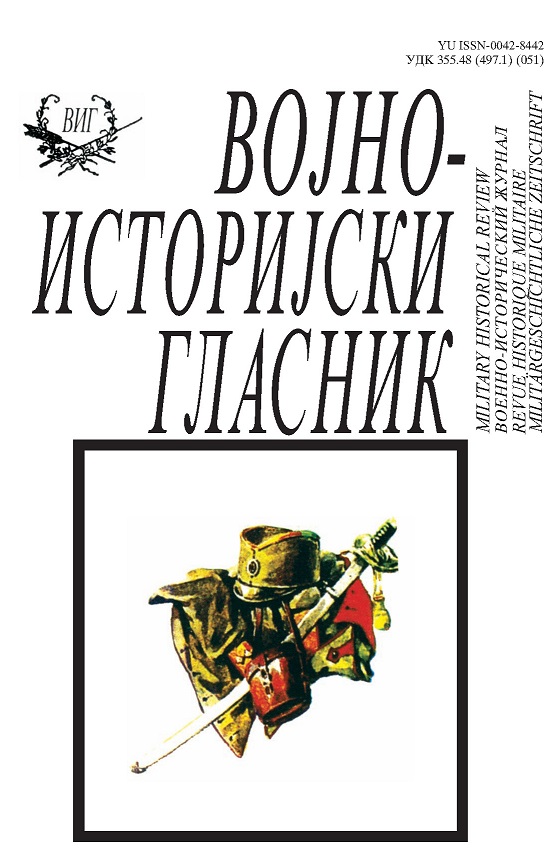Jугословенски тенкисти у Aприлском рату
Yugoslav Tank Units in the April War
Author(s): Dalibor DendaSubject(s): Military history, Military policy, WW II and following years (1940 - 1949)
Published by: Institut za strategijska istraživanja
Keywords: Yugoslav Army; Kingdom of Yugoslavia; tank units; April War; 1941; armor units; armament; military history;
Summary/Abstract: The Army of the Kingdom of Yugoslavia entered the April war in 1941 with two tank battalions and a squadron of light cavalry tankettes. The actions by the Yugoslav tank units did not yield any significant results. The tank companies attached to two combined detachments and deployed along the Kumanovo-Strumica line fell short of offering serious resistance to the enemy. Other armor units (two incomplete tank battalions and a unit of cavalry tankettes) did not achieve considerable results either. The first tank battalion did not even succeed in getting assembled. The unit in Zagreb surrendered without fight; the tanks belonging to auxiliary unit were destroyed during the bombardment of Belgrade; and the rest of the tanks in the Sarajevo-based company were disabled by the crews. More experienced and better trained personnel were recruited for the second battalion which took part in fierce battles around Doboj, facing the attacks by the Ustaša’s fifth column from its own rear. This battalion lost most of its own armor fighting vehicles (26 out of 37 tanks), which confirms the fact that even the most up-dated Yugoslav tanks were no match for the tactically and technologically superior German units. In order to neutralize the Yugoslav tank units, the Germans relied not only on their supremacy in the air, armored vehicles and trained crews, but also on 75 mm anti-armor guns, which the Yugoslav army did not have as part of its armamments. According to available records, the only relativelly successful resistance to the enemy was set up by the sqadron of fast fighting vehicles in the battles in Topola, but it was also destroyed in the course of fight. The overall impression of the activities of the Yugoslav tank units in the April war is not different from the general remark on the attitude of the whole armed forces, who, except for a few examples of courage and self-initiatives, were infected by defetism, vulnarable to actions by the fifth column and unused to fight against up-dated combat means, so that they could offer only sporadic and shortlasting resistance. However, comparing to the West Front, where the Germans won the war in 1940 not because they outnumbered their rival, but because of their superior tactics, the Wehrmacht in Yugoslavia surpassed their opponent not only in tactics and trained personnel, but also in the number and quality of combant means.
Journal: Vojnoistorijski glasnik
- Issue Year: 2009
- Issue No: 2
- Page Range: 78-96
- Page Count: 19
- Language: Serbian

